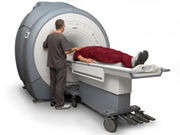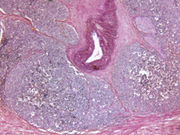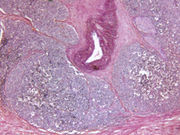Tag: Cancer: Prostate
Video Intervention Persuasive for Screening Recommendations
Intervention changed screening intentions of substantial proportion of male, female viewers
Zoledronic Acid Every 12 Weeks Noninferior in Bone Metastases
No increase in risk of skeletal events versus treatment every four weeks for bone metastases
Less Intense Surveillance OK for Some Prostate Cancer Cases
Patients on active surveillance with stable disease may be candidates for less intense surveillance
BRCA1/2, ATM Mutations ID Risk for Lethal Prostate Cancer
After adjustment for covariates, mutation carrier remained independent predictor of lethal PCa
MRI Has a Role to Play After Negative Prostate Biopsy
Magnetic resonance imaging, MRI-targeted biopsy facilitate detection of clinically significant disease
Methylation of PITX2 DNA Feasible in Prostate Biopsies
Can add prognostic information for risk assessment in presurgical diagnostic setting
Mindfulness-Based Tx Doesn’t Cut Distress in Prostate Cancer
No significant changes in intervention outcomes for mindfulness-based cognitive therapy in advanced PC
ADT Use Not Linked to Dementia in Prostate Cancer
No increased risk of dementia for androgen deprivation therapy use versus nonuse
Guidelines Developed for Prostate MRI After Negative Biopsy
Prostate MRI, MRI-targeted cores can facilitate detection of significant disease over repeat biopsy
Cancer Patients Benefit From Exercise During, After Treatment
Studies show better physical function, quality of life for those who did strength training, aerobic activity














